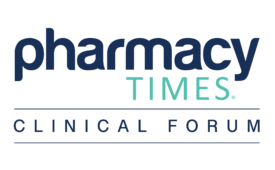
There is no consensus when treating patients with graft-vs-host disease (GVHD) because of the varying disease states and different interpretations among providers, explained Amir Ali, PharmD, BCOP, during a Pharmacy Times Clinical Forum discussion. Ali is a clinical pharmacist specialist in hematology/oncology and bone marrow transplant (BMT) at the University of Southern California Norris Comprehensive Cancer Center in Los Angeles. As the treatment landscape for GVHD continues to develop and new data emerge, pharmacists can develop more individualized regimens for patients while finding their roles in treatment management are expanding.
Although steroids are typically the universal option for frontline treatment, Ali emphasized that long-term steroid use isn’t ideal due to adverse events (AEs)—such as fibrosis, which can be irreversible in patients with chronic GVHD (cGVHD)—and the possibility of disease becoming refractory. According to Ali, there are only 3 FDA-approved agents for the treatment of patients with GVHD: ibrutinib (Imbruvica; Janssen Biotech, Inc, Pharmacyclics LLC), which was approved in 2017; belumosudil (Rezurock; Kadmon Pharmaceuticals LLC), which was approved in July 2021; and ruxolitinib (Jakafi; Incyte), which was approved in September 2021 and has indications for cGVHD.
As an example, Ali highlighted a patient who had cGVHD in the skin and joints. Further, he decided not to treat the patient with ibrutinib due to the lack of efficacy shown in data from clinical trials. Using other data, he chose to treat the patient with belumosudil because it demonstrated response rates in approximately 77% of patients who received the treatment. Real-world data, Ali said, can be important for health care providers when determining individualized treatment plans for patients.
Because steroids aren’t ideal in the long term, there are different practices in place to remove patients from this high-dose treatment as soon as possible, whether it’s adhering to a particular timeline or tapering. According to Tina Gu, PharmD, BCOP, clinical pharmacist in pediatric hematology/oncology and BMT at the University of California San Francisco (UCSF) Benioff Children’s Hospital, her practice tends to taper patients off steroids before they develop refractory disease or experience AEs.
“Our standard is to try to start tapering after 2 weeks of high-dose steroids, but what we’re seeing more at our hospital is adding a second agent earlier on. So [we’re] not even waiting for [patients with GVHD] to [develop] steroid-refractory [disease], and [we’re] adding a second oral agent earlier because our providers [are] anticipating that it’s already going to be hard to taper [patients] off their steroids. So [by] adding the steroid-sparing agent, [providers] may be more successful in getting them off these agents,” Gu said during the discussion.
Furthermore, during the tapering of steroids, patients may experience cGVHD-related exacerbation or recurrence. Pharmacists may want to increase the dose or begin switching the patient to a new drug. Sandy On, PharmD, clinical pharmacist in hematology and BMT at Stanford Health Care in California, noted that although her institution wants patients off steroids as soon as possible, she continues the use of steroids because she is already considering what additional treatment can be used currently and in second-line treatment. Additionally, for patients who experience a partial response to steroids, the next steps can be determined depending on which organ system is involved in the patient’s GVHD state.
Angela Lee, PharmD, BCOP, clinical pharmacist in hematology/oncology, BMT, and cellular therapies at UCSF, said that add-on treatments can rely heavily on patient characteristics, such as their response to steroids, which organs are affected by their GVHD, or the individual drug’s mechanism of action.
“[Add-on treatment] also depends on the organ affected, because there are some data that [show] belumosudil may be more effective in [the] lung setting. For patients who present with lung [disease] up front, that may be something that is considered along with [their] regimen,” Lee said during the discussion. “[For] what [Ali] was mentioning earlier, it also depends on the mechanism of action, such as ruxolitinib… If providers want to target cGVHD earlier, they might want to consider using [that] first.”
Pharmacists, particularly BMT pharmacists, have a significant role when caring for patients with GVHD. According to the panelists, pharmacists are typically the most constant health care professionals whom patients see when receiving treatment for their disease state. Especially in GVHD treatment, pharmacists tend to know the data better than other health care professionals and help make recommendations and decisions for tapering medications or treatment selection, according to the panelists.
Additionally, pharmacists are also the ones who are planning treatment pathways around insurance issues. Lee explained that she and other pharmacists at her practice must often plan far in advance because certain insurance companies are not always specific in what they are able to cover or may not know which limited distribution specialty pharmacies carry certain medications, such as ruxolitinib. Ali echoed this point by emphasizing his experiences when treating patients.
“Even coming up with treatments, we do that all the time. I have providers come up to me almost daily and share a case with me and say, ‘This is the situation.’ And every practice is different, but that’s the [direction] we’re heading in,” Ali explained during the discussion. “So having a pharmacist on the [patient’s health care] team to break [everything] down is extremely important.”





